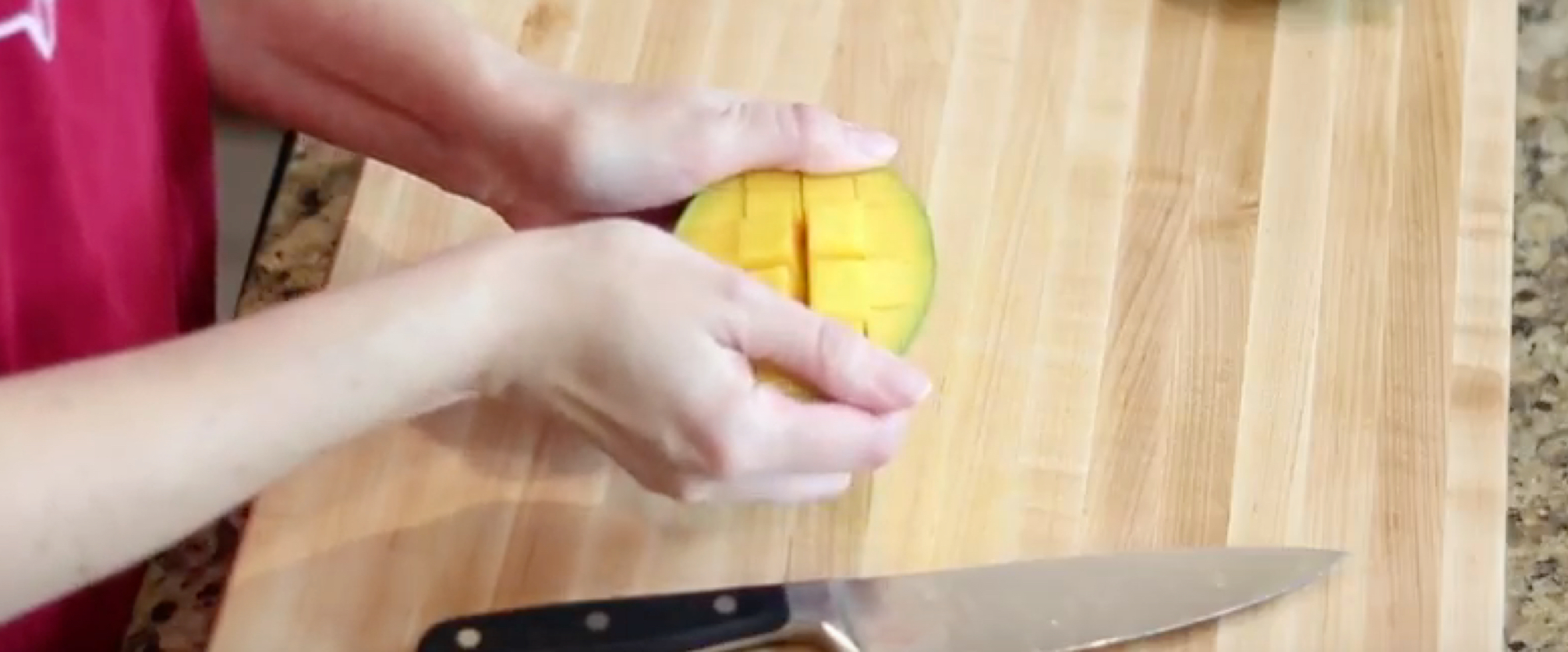

Let’s talk mangos, a relative to the cashew and pistachio, mangoes are one of the most popular fruits in the World. They provide 100% of your daily vitamin C so they are a great addition to sweet and savory dishes alike.
When your picking out a mango squeeze it gently. A ripe mango will give slightly. Color really isn’t a ripeness indicator in mangoes, so a little squeeze is all you need
Mangoes have a flat-ish oblong pit in the center of it. The objective is to cut along the sides of the pit, separating the flesh from the pit, the sides are called cheeks.
Stand the mango up and imagine the flat, oval pit inside. With a sharp knife, I am using a 6 inch classic Wustoff chefs knife, cut from the top of the mango, down one side of the pit. I you hit the pit just start to angle away from the center and go around the pit. Then repeat this cut again on the other side, leaving you with three pieces; two fleshy sides and the pit in the middle.
Take a mango half and use a knife to make lengthwise and crosswise cuts in it, but try not to cut through the peel. From this point you can either invert the mango half so that the cut segments pop out and you can use a paring knife to cut them out or if your mango is juicy, you can take a spoon and scoop out the cut pieces.
I really don’t like that glass ‘trick’ where you slide the skin off the mango with the side of a glass. It seems far too easy to slip, break the glass and cut your hand open. Maybe if you had a thin metal or wood cup you could give it a try, but a spoon works just fine in my opinion.
Take the mango piece with the pit, lay it flat on the cutting board. Use a paring knife to cut out the pit and remove the peel. You may be able to get a little extra mango from around the pit.
There are over 400 varieties of mangoes grown around the world, but in my part of the globe, there are two that are most common at the grocery store. The most popular variety is the Tommy Atkins, which has a firm flesh with lots of fibers and a mild taste.
The second most popular variety is the Ataulfo mango, or honey mango, which has a relatively small pit and a creamy flavor with very few fibers; it's kind of the mango lovers' mango. I have found these little guys at Whole Foods and Trader Joe’s in the past.